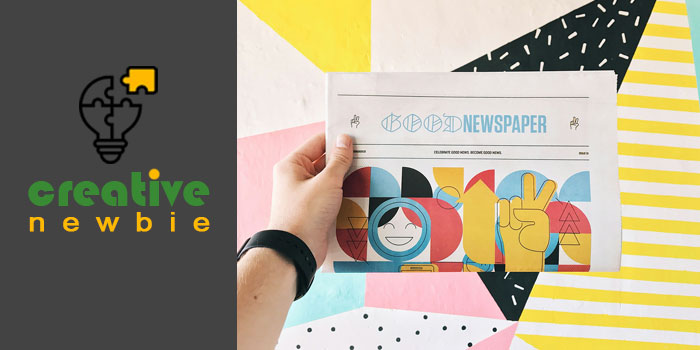Are you in search of the perfect graphic design style for your latest project? Unsure about which visual direction to pursue for your upcoming design endeavor? Fear not; you’ve landed in the right spot.
In this guide, we’ll delve into the five most popular graphic design styles and offer insights on how to navigate your choices. If you’re eager to explore different design approaches, let’s delve deeper into the world of graphic design styles.
Selecting the Ideal Graphic Design Style
Every graphic design project begins with a blank canvas, ripe for inspiration from various design avenues. While some may argue that true originality is impossible in a sea of existing designs, incorporating elements from diverse styles can yield innovative results.
A Practical Example
Imagine embarking on a new project and meeting the client for the first time. They present you with the Apple logo, expressing a desire for a similar aesthetic in their own branding. Instantly, you discern their preference for a minimalist design with a powerful symbol as the focal point.
It’s imperative to seek the client’s approval for the chosen graphic design style. Engage them in a dialogue about their vision and preferences, as their input will shape the direction of the project. Failure to involve the client in this crucial step risks rejection of your work and necessitates starting afresh.
Neglecting to ascertain the client’s preferred design direction can strain your relationship and squander precious time and effort. I learned this lesson the hard way during my early days as a graphic designer, when I neglected to consult my first client on their style preference. The subsequent rejection of my design taught me the importance of client collaboration.
To avoid such setbacks, it’s essential to gather clear requirements from the client. Presenting them with draft designs in various styles allows for informed decision-making and ensures alignment with their expectations. This practice not only streamlines the design process but also cultivates trust and rapport with clients.
With experience, identifying the most suitable design style for a project becomes intuitive. For instance, creating visuals for a children’s YouTube channel necessitates vibrant, cheerful colors to resonate with young audiences.
Exploring Popular Graphic Design Styles
Now that we’ve covered the basics, let’s delve into some of the most popular graphic design styles.
5 Popular Graphic Design Styles
1. 3D Design Style
The 3D design style has surged in popularity, offering a dynamic departure from flat design. Characterized by its illusion of volume and mass, 3D graphics create a sense of spatial realism.
Properties:
- Incorporates lighting effects.
- Often employs a monochromatic palette.
- Creates the illusion of depth and dimension.
Mixes well with:
- Masculine themes.
- Illustrations.
- Grunge aesthetics.
- Fun and playful styles.
- Abstract elements.
2. Retro Style
Drawing inspiration from bygone eras, the retro style evokes nostalgia and vintage charm, reminiscent of past cultural icons like the Air Jordan shoes from 1985.
Properties:
- Features illustrations of vintage technology and music.
- Utilizes bold colors, varied patterns, and distinctive shapes.
- Incorporates fonts with hard shadows or hand-drawn typefaces.
Mixes well with:
- Typography.
- Nature themes.
- Luxury aesthetics.
- Grunge textures.
- Flat design.
- Entertainment themes.
3. Abstract Style
A realm of boundless creativity, abstract design allows for the fusion of random shapes and lines to captivate viewers while conveying a client’s message.
Properties:
- Lacks defined representation of objects.
- Interpretation depends on the individual viewer.
Attributes:
- Font selection must align with the theme or project.
- Text design reinforces brand messaging.
Mixes well with:
- Feminine themes.
- Retro aesthetics.
- Natural motifs.
- Illustrations.
- Grunge textures.
- Entertainment themes.
- Flat design.
4. Photorealistic Illustrations
This style breathes life into artistic concepts by transforming actual images into detailed illustrations with defined lines and a resemblance to the original source.
Properties:
- Requires well-defined lines and intricate detailing.
- Aims for likeness to the original image.
Mixes well with:
- Vintage aesthetics.
- 3D graphics.
- Natural motifs.
- Feminine and masculine designs.
- Grunge textures.
5. Minimalism Graphic Design Style
Simplicity reigns supreme in minimalism, employing clean lines and sparse elements to convey messages with clarity and precision, albeit with the challenge of avoiding sterility.
Properties:
- Utilizes minimal elements and selective color palettes.
- Emphasizes straightforward communication.
Mixes well with:
- Luxurious design.
- Abstract concepts.
- Professional aesthetics.
- Feminine motifs.
- Geometric elements.
- Flat design.
Final Thoughts
While these five graphic design styles stand out as popular choices, the ultimate decision rests on the preferences of both you and your client. Choose the style that best aligns with the project’s goals and resonates with its intended audience.


